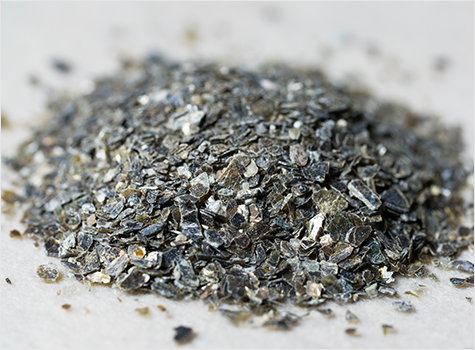Crude vermiculite from the mine consists of golden / brown / silver, flakes which are carefully classified into five grades – each having a specified range of particle sizes. The coarsest grade comprises particles ranging between 1mm and 7mm, while the finest grade consists of particles between 0.710mm and 0.250mm in size. The loose bulk density of crude Vermiculite varies with the grade, but is typically between 700 and 1050 kg/m3.
CRUDE VERMICULITE

EXFOLIATED VERMICULITE

The exfoliation process is carried out commercially by passing crude vermiculite through a furnace chamber in a controlled manner. The crude vermiculite then expands at right angles to the cleavage planes, producing concertina-shaped particles many times their original volume.

Why does vermiculite exfoliate ?
A 2:1 silicate sheet composed of two flat layers of silica and alumina tetra – hedra (the tetrahedral layers), which are joined together in a layer composed of apical oxygen atoms, and magnesium, iron, and hydroxyl molecules (the octahedral layer). Between the 2:1 sheets lies the ion exchangeable layer. This layer will change in thickness depending on the interlayer cation present and the arrangement of waters of hydration associated with it.


